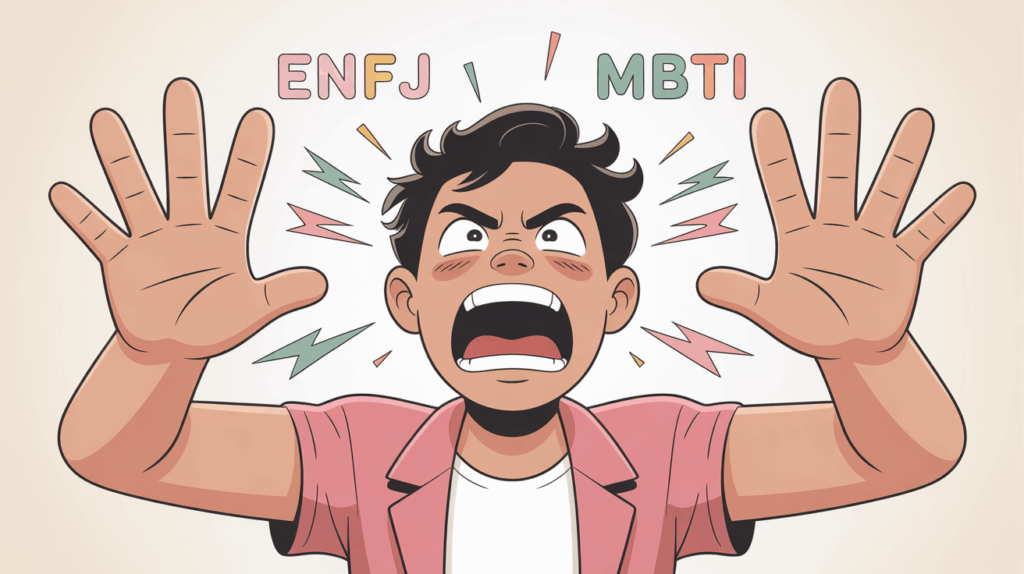
Introduction 🌱
When it comes to emotions, ENFJs are known for their empathy and leadership skills. But what happens when these warm and charismatic types feel anger? In this post, we’ll explore ENFJ emotional reactions and uncover how they deal with anger. By comparing ENFJs with other types—such as INFJs—we’ll reveal unique insights into how they transform conflict into growth opportunities.
Personality Overview 🔮
ENFJs are natural connectors, often taking on roles as leaders, mentors, or mediators. Anger for ENFJs doesn’t usually appear as explosive outbursts—it shows up through passionate speeches, firm boundaries, or protective instincts for those they care about. Unlike INFJs, who may internalize anger quietly, ENFJs lean toward external expression aimed at resolution and harmony.
Understanding ENFJ emotional reactions in anger helps us see their dual nature: deeply empathetic yet capable of assertive confrontation when values are threatened. This outward style reflects their Extraverted Feeling (Fe) function, which prioritizes group well-being and collective harmony over individual frustration. When anger arises, it is often because ENFJs sense injustice or disharmony in their environment.
Key Traits 📚
Here are 4 powerful insights into ENFJ anger:
- Protective Passion
ENFJs often express anger when others are mistreated. Their anger is tied to empathy, making them vocal defenders of fairness. For example, an ENFJ teacher may become passionate when seeing a student bullied, quickly stepping in to restore balance. - Charismatic Confrontation
Instead of shutting down, ENFJs channel anger into persuasive communication. They speak with intensity, aiming to resolve conflicts and inspire change. This often makes them natural mediators during group disputes, as they combine logic with emotional appeal. - Value-Driven Boundaries
When core values are violated, ENFJs draw clear lines. Unlike INFJs, who may suppress conflict, ENFJs openly establish boundaries to protect harmony. Their approach can be direct yet compassionate, reminding others of shared principles. - Transforming Tension into Growth
ENFJs don’t let anger linger—they often reframe it as an opportunity to strengthen relationships. Their focus is on healing and mutual understanding. They may initiate conversations after conflicts to ensure everyone feels heard and respected.
Comparisons ⚔️
- ENFJ vs INFJ: INFJs may internalize anger and appear withdrawn, while ENFJs externalize it with assertive communication. This makes ENFJs more proactive in addressing problems rather than avoiding them.
- ENFJ vs ESTP: ESTPs may react impulsively in the moment, but ENFJs channel emotions toward long-term solutions. Where ESTPs seek immediate release, ENFJs seek resolution.
- ENFJ vs INTJ: INTJs respond with cold strategy, while ENFJs combine emotion with vision, using anger as a motivational force to inspire others.
These comparisons highlight how ENFJ emotional reactions to anger are distinct: expressive, value-driven, and socially oriented.
Lessons 💡
From ENFJs, we can learn:
- Anger can be a tool for positive change when rooted in empathy.
- Conflict resolution benefits from passionate yet respectful communication.
- Establishing boundaries openly can protect relationships without causing lasting harm.
- Long-term harmony often comes from addressing conflicts directly, not avoiding them.
By observing ENFJ emotional reactions, we see that anger doesn’t always divide—it can also unite, strengthen, and inspire. In workplaces, this means ENFJs can transform tense moments into opportunities for team growth. In personal life, they may use anger to reinforce loyalty and deepen trust in relationships.
Final Thoughts 🌟
Anger is often misunderstood, but for ENFJs, it reveals a deeper commitment to values and people. Their ability to express anger with purpose sets them apart from other types. Exploring ENFJ emotional reactions reminds us that authentic leadership isn’t about avoiding conflict—it’s about transforming it into growth. For readers, this provides a reminder that anger, when guided by empathy and vision, can be a powerful catalyst for positive change.